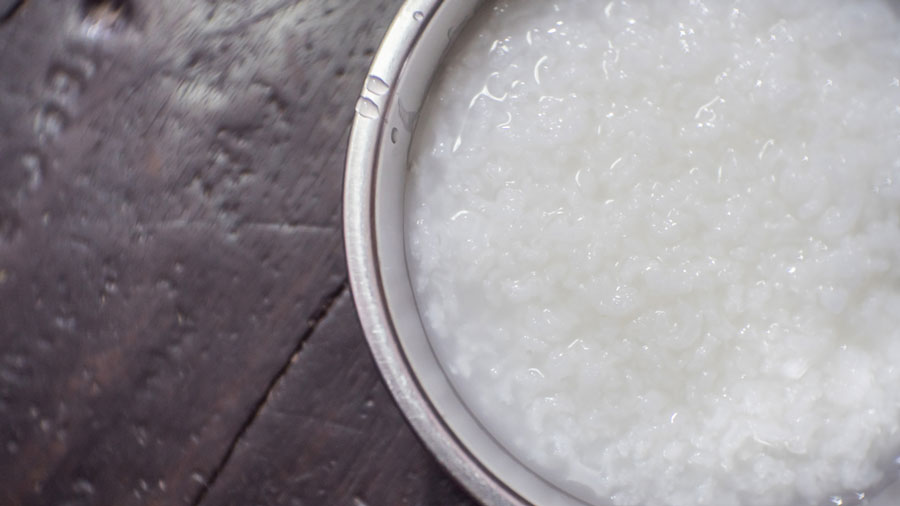Bengalis were torn between salivating and gloating when steaming plates of panta bhaat, alu bhorta and maachh bhaja were served by a contestant of Bangladeshi-origin at the grand finale of MasterChef Australia. There are whispers that while some Bengalis rushed to the kitchen to try out bowls of this proletarian, hence niche, delicacy, some — those with the Bengali version of the stiff upper lip — were left shocked at the decision to push rice gruel, a staple cooked with leftovers in poorer households, under the spotlight. Their derision is suggestive of a fact that cannot be masked by either aroma or flavour: the world of food is a distinctly segregated territory in which some dishes, usually the ones endorsed by rich and powerful nations, culinary cultures and people, have permanent seats at the high table of global cuisine. Thus paella and risotto — panta bhaat’s Spanish and Italian cousins, respectively — have gone chic and are being wolfed down by patrons in Michelin-starred restaurants. Yet, it took the world a while to discover the humbler paterfamilias of the clan.
This hierarchy of tastes must be examined in the wider context. Cuisines, integral to culture, are, ironically, reliable mirrors of cultural and ethnic prejudices and fault lines. India — home to a dizzying array of dishes — is a convincing example of food fetishes. While the north chomps on chhole bhature, dal makhani and tandoori chicken, a day in the southern part of the country is incomplete without tucking into dosas and vadas. Meanwhile, the east salivates at fish curry, and the west cannot have enough of theplas and poha. But fetishes are seldom representative; they can be severely exclusionary, rendering invisible local — especially indigenous — food and its history. The market, that iniquitous platform under capitalism, has done its bit to push to the margins already-marginalized food. Fermented rice, celebrated as a health drink and gruel by India’s adivasis, is unlikely to be marketed as a palatable product for the urban, uninformed stomach under the spell of the basmati. A prevailing fallacy among cultural commentators is to view parochialism as being synonymous with regional sentiments. Yet, as Bengal’s panta bhaat has just shown, the provincial can essentially serve as capital to ignite interest — scholarly and mundane — in the vanishing dishes that ought to make up India’s food map.
What is getting erased, from plates and public imagination, transcends food. The effacement has serious real-life consequences. Consumption patterns have a bearing on agricultural productivity. A study by the Central Rice Research Institute in Cuttack shows that the rising popularity of basmati is driving towards extinction a mind-boggling 2,00,000 indigenous rice varieties that are far more nutritious than the polished basmati. Owing to their widespread acceptability and export value, specific kinds of rice and wheat are prioritized by the State — be it in the public distribution system, mid-day meals or even scientific research. This has edged out indigenous food items like millet that are packed with benefits. A survey shows that between 1983 and 2011, changing dietary patterns reduced iron intake in India by 21 per cent in rural areas. Then there is the massive, under-reported ecological devastation that is decimating India’s original superfoods.
Not just panta bhaat but little-known millets, shoots and other forgotten food must all make it to the high table, which needs to be wider, not higher.











